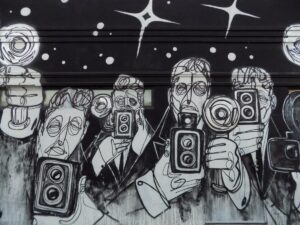
2a. My perspective from reading the articles from AIGA has shifted from a less understanding to a more concrete understanding about the ethics of design. The importances of having ethics, as well as the importances of the law. It is only fair to have your works credited and recognized. Many of my works I have done in class aren’t credited in the past. But that was because they weren’t enforced when it was presented for classwork. But as an intern right now and in the future, it is always important to have the works credited. I wouldn’t want someone to use my work one day without having the credits shown. For example, it is only fair to practice what I preach. According to A Client’s Guide to Design: How to Get the Most Out of the Process from AIGA Business Ethics. “A professional designer must not attempt, directly or indirectly, to supplant or compete with another designer by means of unethical inducements.” To me, that quote means that even if one’s work isn’t appealing, the ethics of not using unethical inducement is important.
2b. The New York Times article “Shepard Fairey Is Fined and Sentenced to Probation in ‘Hope’ Poster Case” is about Shepard Fairey. An artist that was fined in the federal court for using a photograph without permission and making a profit off that. Fairey at first denied that he was in the wrong, stating that it was a fair use of the photograph of Obama. He claims that he transformed the photograph later on and that was allowed under creative expression. What I got from this article is that although you can get away with taking credit for some things, it isn’t wise to. Even when corner stores take photographs from the internet and use that on their storefront / menus, they could get into huge legal issues. It is most important to take the interest of ethics before anything else after reading this article. Although Fairey is doing fine and continues to do artworks on social media such as Instagram, it is still a good example to not follow what he has done with his poster with Obama as he stated that he was ashamed of his behaviors.
Sources
Richard, Grefė. “A Client’s Guide to Design: How to Get the Most Out of the Process” AIGA. PDF. New York City, 2001
Kennedy, Randy. “Shepard Fairey Is Fined and Sentenced to Probation in ‘Hope’ Poster Case.” The New York Times, The New York Times, 7 Sept. 2012



